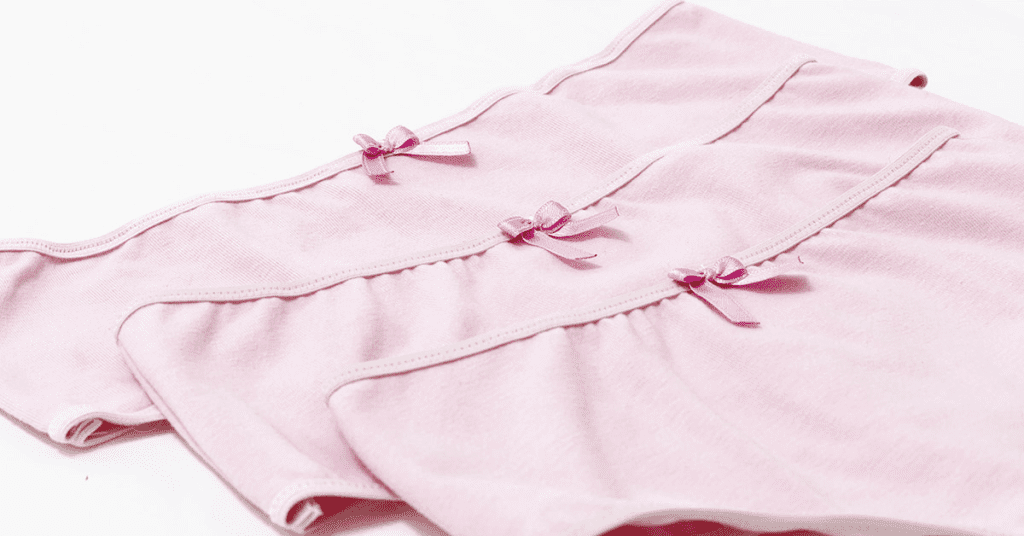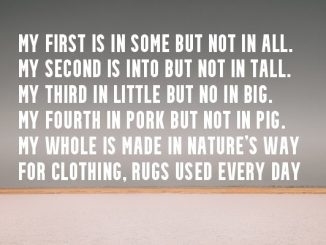Most people probably haven’t given much thought to the little bow on the front of women’s underwear. It’s a small, almost overlooked detail in a garment we wear every day. But this delicate bow has a surprising history, reaching back to a time when underwear served a very different purpose. Today, it’s an aesthetic feature that adds a touch of femininity, but its origins tell a story of practicality and evolution in fashion. Let’s explore the hidden history behind this curious little bow.
A Practical Feature from Pre-Elastic Days

Before elastic became a standard component in undergarments, women’s underwear needed something to keep it securely in place. In the early days of women’s undergarments, elastic wasn’t available, so practicality demanded another solution. This is where the bow came in: it was once part of a functional drawstring that held undergarments up.
In earlier centuries, underwear was held up with ribbons threaded through lace eyelets. These ribbons would be tied at the front, securing the garment in place. This tied bow became both a practical and visual feature, marking the front of the garment and preventing slippage. What began as a functional necessity has now become a style feature, a nod to the past that remains on modern undergarments even though it no longer serves the same purpose.
Why the Bow Stayed Even After Elastic Arrived
With the arrival of elastic fabric in the 19th century, drawstring bows were no longer necessary for holding up underwear. However, the bow didn’t disappear. Instead, it transitioned into a decorative detail, maintaining its position on the front of the garment. So why has it stuck around for so long?
One reason is tradition. The bow has been part of women’s undergarments for centuries, and even though its function changed, its presence remained. This detail became associated with femininity and charm, turning into an iconic touch that many women find appealing. The bow, once a symbol of practicality, has become a symbol of femininity, adding a touch of elegance to an otherwise simple garment.
Aesthetic Appeal: The Bow as a Symbol of Femininity and Innocence
In modern times, the bow on women’s underwear is often seen as cute, feminine, and even a little whimsical. It represents a sense of innocence and playfulness, evoking a nostalgic nod to traditional femininity. Many women find it endearing, as the bow adds a decorative flair to something usually hidden beneath clothing. It’s a small detail that makes a subtle but notable impact on the design of the garment, giving it a softer and more appealing look.
Discussions on platforms like Reddit reveal that many people see the bow as an aesthetic enhancement. It provides a visual marker for the front of the garment, especially helpful in rushed or dark dressing situations. The bow is a simple but effective way to bring a touch of beauty and charm to a practical item.
Tracing the History of Women’s Undergarments
To fully understand why the bow remains a feature of women’s underwear, we need to take a brief journey through the evolution of women’s undergarments. Centuries ago, underwear as we know it didn’t exist. Women wore layers of petticoats, chemises, and corsets, with no specific garment for the purpose that modern underwear serves.

It wasn’t until the 1800s that dedicated undergarments started to take shape. During this time, drawers and pantalettes became popular. These garments often included a drawstring tied in a bow at the front, keeping them secure. Over time, as fashion evolved, these drawstrings became less functional and more decorative, eventually turning into the bow we see on women’s underwear today.
The 1800s: When Drawers Became Decorative
The 19th century was a turning point for women’s fashion. Clothing became more structured, and undergarments started evolving to fit the new styles. Drawers became a staple in women’s wardrobes, often adorned with lace, ribbons, and bows. Although elastic was introduced later, the early versions of these undergarments relied on drawstrings, and the bow at the front became an iconic part of their design.
As fashion continued to evolve, so did undergarments. By the late 1800s, undergarments were increasingly decorated, and the bow had transitioned from a necessity to a decorative element. It was here that the bow’s transformation from functional to fashionable truly began.
The Persistent Charm of the Bow Through Modern Times

Even as undergarments became more advanced with the use of elastic, and fashion moved toward more minimalistic designs, the bow on women’s underwear has persisted. Designers recognize the charm it brings, giving the garment a classic touch that many women love. Today, the bow has lost all practical purpose but has gained a sentimental one. It’s a small, enduring detail that evokes a sense of nostalgia for a time when underwear was both practical and decorative.
The bow has become so embedded in the design of women’s underwear that it’s hard to imagine these garments without it. It may no longer be needed to keep undergarments in place, but it brings a familiar sense of beauty and femininity to modern designs. For many, the bow is more than just a decoration—it’s an emblem of grace, charm, and the evolution of women’s fashion.
The Bow as a Marker of the Front: A Handy Guide in a Hurry
One practical reason the bow has persisted is its usefulness in helping wearers identify the front of the garment. We’ve all had moments when we’re rushing to get dressed or pulling clothes out of a drawer in dim lighting. The bow, though small, acts as a quick guide, allowing you to know instantly which side is the front. While this wasn’t the original purpose of the bow, it has become a helpful feature, especially in a fast-paced world.

In a way, the bow combines both form and function, blending aesthetics with a small but useful purpose. It may not be a necessary feature, but it’s certainly one that many appreciate, whether consciously or subconsciously.
A Touch of Femininity That’s Here to Stay
The bow on women’s underwear is more than just a piece of fabric—it’s a tribute to history, femininity, and the evolution of fashion. It reminds us of an era when garments were crafted with care and attention to detail, combining practicality with beauty. The bow’s journey from functional drawstring to decorative touch is a testament to how fashion adapts while still honoring tradition.
While today’s underwear no longer requires a bow for support, this small adornment continues to capture the hearts of wearers. It’s a subtle detail that brings a little extra charm to an essential piece of clothing, proving that even the smallest features can have the most interesting stories.
Conclusion: The Lasting Appeal of the Bow on Women’s Underwear
The bow on women’s underwear may seem insignificant, but it carries a rich history rooted in both practicality and beauty. From its origins as a necessary drawstring in pre-elastic days to its current role as a decorative symbol, the bow is a feature that has withstood the test of time. It adds a touch of femininity and nostalgia, connecting modern wearers to a history of craftsmanship and style.
So, the next time you see that delicate bow on the front of women’s underwear, remember its story. It’s more than just a decoration; it’s a nod to the past and a reminder of how fashion can evolve while still holding on to the little details that make it unique.


